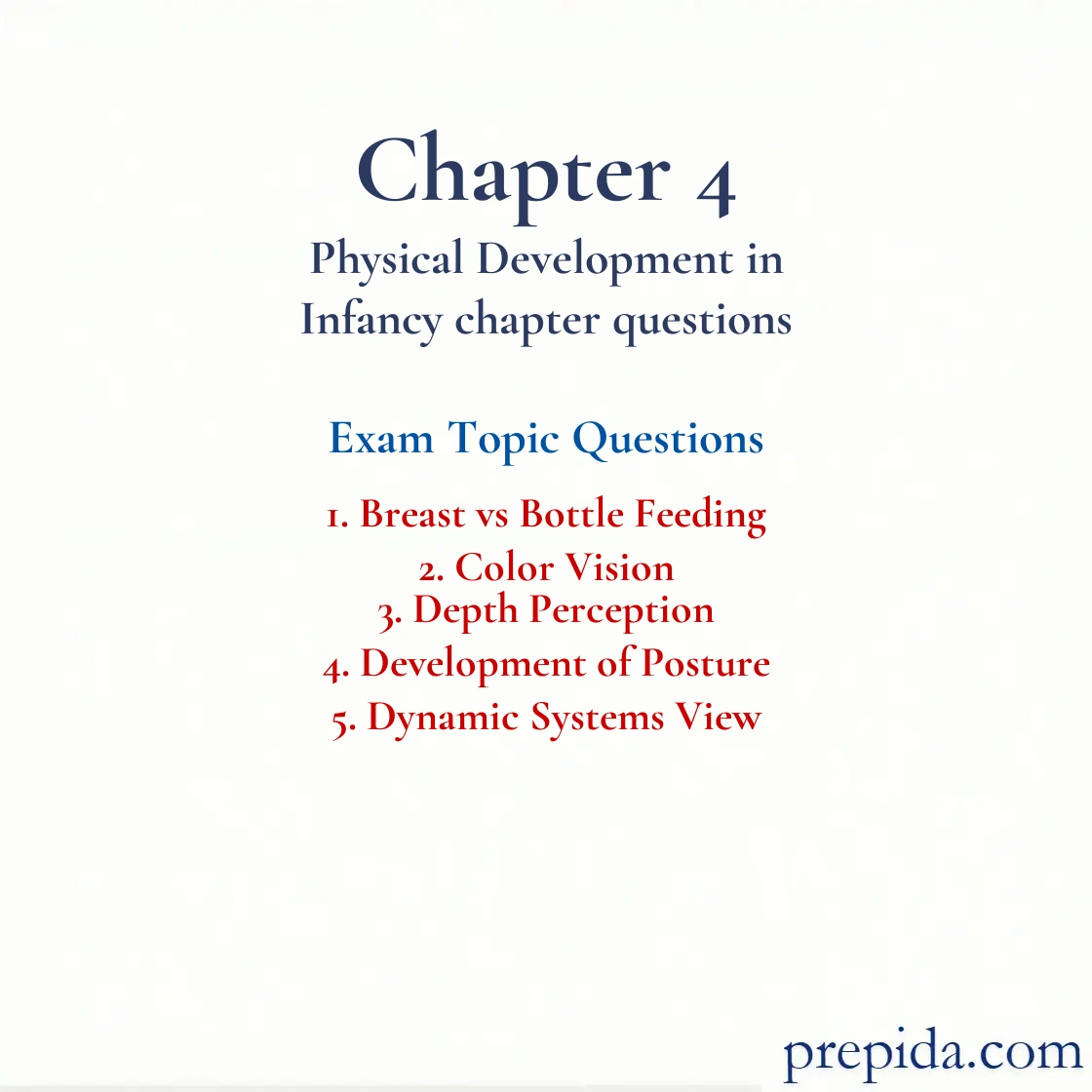
Which of the following statements is true of the outcomes for women who breast feed their infants?
- Conclusive evidence shows that women who breast feed their infants have a higher incidence of metabolic syndrome in midlife.
- Consistent evidence indicates a lower incidence of breast cancer in women who breast feed their infants.
- Evidence indicates reduced rates of osteoporosis in women who breast feed their infants.
- Evidence shows decreased risk of postpartum depression in women who breast feed their infants.
Which of the following statements is true about circumstances when mothers should not breast feed their infants?
- Mothers should not breast feed when they are infected with HIV.
- Mothers who are above 35 years of age should not breast feed their infants.
- Mothers who have type 2 diabetes should not breast feed their infants.
- Mothers should not breast feed if they have a physical disability.
In the context of the debate over whether breast feeding is better for an infant than bottle feeding, which of the following is true?
- The growing consensus is that breast feeding is better for the infant's health.
- The majority of doctors are in favor of bottle feeding.
- Breast feeding is better for bonding between mother and infant, whereas bottle feeding is better for the baby's health.
- There are no differences in health outcomes for babies who are breast fed and babies who are bottle fed.
Identify an outcome, which is supported by research, for infants who are breast fed when compared with bottle-fed infants.
- Breast-fed infants have higher rates of sudden infant death syndrome (SIDS) than bottle-fed infants.
- Breast-fed infants are less likely to develop type 1 diabetes in childhood than bottle-fed infants.
- Breast-fed infants have better cardiovascular health than bottle-fed infants.
- The cognitive development of breast-fed infants is higher than that of bottle-fed infants.
Donna's doctor recommends that she breast feed her newborn. Research conclusively indicates that breast feeding has several positive outcomes for the mother, including a
- speedy return to prepregnancy weight.
- reduced risk of osteoporosis.
- reduction in the incidence of ovarian cancer.
- reduced incidence of postpartum depression.
Which of the following statements is true of an infant's color vision?
- It usually mirrors that of an adult at birth.
- Its development is independent of the experience of the infant.
- Its development, in part, reflects maturation.
- It usually approximates that of an adult by four months of age.
In the visual cliff experiment by Eleanor Gibson and Richard Walk, which of the following did most babies do when encouraged to crawl onto the deep side of the visual cliff?
- They would crawl onto the cliff side.
- They would not crawl onto the cliff side.
- They would crawl onto the cliff side only when their mothers called them.
- They would not crawl onto the cliff side but showed significant increases in heart rate, indicating anxiety.
Experiment: A carefully regulated procedure in which one or more of the factors believed to influence the behavior being studied are manipulated while all other factors are held constant.
The "visual cliff" experiment was used to measure
- size constancy.
- shape constancy.
- visual acuity.
- depth perception.
Perception: The interpretation of what is sensed.
________ is a dynamic process that is linked with sensory information in the skin, joints, and muscles, which tell us where we are in space; in vestibular organs in the inner ear that regulate balance and equilibrium; and in vision and hearing.
- Posture
- Cognitive development
- Alignment
- Reflexive behavior
Which of the following statements is true of the development of posture?
- Postural control is a static process that is linked with sensory information in the skin, joints, and muscles.
- Newborn infants can voluntarily control their posture.
- Postural control is required for gross motor skills to develop.
- Locomotion and postural control are independent of each other.
Gross Motor Skills: Motor skills that involve large-muscle activities, such as walking.
Kyle and Amy want their baby to walk early. In order to accomplish that, they take the baby's favorite toy and place it where the child cannot reach it from a crawling position. Kyle and Amy believe that this will motivate the baby to stand upright to retrieve the toy and will, thus, result in him walking sooner. Their belief is most consistent with the ________ systems view of development.
- maturational
- evolutionary
- static
- dynamic
Dynamic Systems Theory: The perspective on motor development that seeks to explain how motor behaviors are assembled for perceiving and acting.
The view of development that sees motor skills development as a solution to an infant's problems is known as ________ systems theory.
- dynamic
- maturational
- static
- environmental
Theory: An interrelated, coherent set of ideas that helps to explain phenomena and facilitate predictions.
Developmentalist Arnold Gesell proposed that motor development comes about through
- repeated experiences.
- the unfolding of a genetic plan.
- positive reinforcement.
- a conducive environment.
Genotype: A person’s genetic heritage; the actual genetic material.
According to dynamic systems theory, ________.
- infants assemble motor skills for perceiving and acting
- infants' perception and action are disconnected
- motor development comes about through the unfolding of a genetic plan
- infants fine-tune their movements before they perceive something in their environment
Dynamic Systems Theory: The perspective on motor development that seeks to explain how motor behaviors are assembled for perceiving and acting.